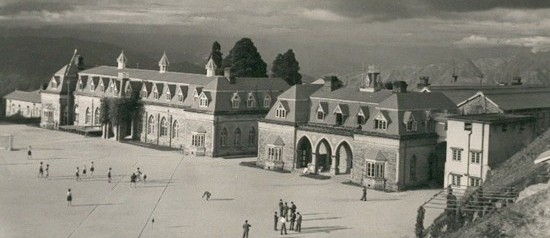Introduction
“Youth,” said Baron Pierre de Coubertin, “is the springtime of the body.” Mens sana in corpore sana in corpore sano — a healthy mind in a healthy body — has been the ideal of the good school in the centuries old Public School tradition as in the Vedic Indian tradition. Good health and an all-round intellectual, value based and academic education during school days are perhaps the most important assets a boy can have. For generations, Darjeeling has been renowned — not only in India but also in other Asian countries and in the West— as the unique hill resort where both good health and good education have been provided at St. Paul’s School.

St. Paul’s traces its origins to a Calcutta School from 1823. In 1864 the School was transferred to Darjeeling although the means of reaching Darjeeling in those days were very rugged. The site chosen was the hill called Jalapahar. At an altitude of nearly 7500 feet above sea level, St. Paul’s became a Public School at the highest altitude in the world.
Health was certainly one of the main reasons for transferring St. Paul’s-to Darjeeling in the nineteenth century. Today, as then, the Himalayan environment is good for the boys’ health. The exhilarating climate and the inspiring presence of the Himalayas provide an ideal environment for the ideal school.
The School (spread over approximately 65 acres) is situated on a spur of the hill, Jalapahar, about one kilometre to the south of Darjeeling, overlooking the town. Set in the midst of the grandest and most majestic scenery of the Himalayas, the buildings and grounds look across the intervening hills and deep valleys to the vast Kanchenjunga range forty miles away. It is among the foothills of this range and of the Nepal, Sikkim and Bhutan Himalayas that St. Paul’s boys have an opportunity of learning the skills of rock climbing and trekking and of facing up to new and toughening adventure experiences under the strict guidance of seasoned climbers and teachers.
Amongst the distinguished men who have served the School as Rectors over the years, each of whom strengthened and developed the tradition of the School and its educational standards, Mr. L. J. Goddard, O.B.E. M.A. (Cantab), is most often remembered. He served from 1934 to 1964 and came to be regarded as the modern founder of St. Paul’s in its present tradition. But, you may ask, what is this tradition?
Once, when reflecting on the meaning of the School’s motto which, in translation, runs ‘Having been advised, let us follow higher things,’ Mr. Goddard said: “Exactly what is it we are trying to do? Our fundamental aim is to produce quality; to teach our boys to distinguish between the important and the trivial; to awaken and cultivate in our boys an ever-increasing desire to follow ‘higher things/ just because they are higher.”
The purpose of education, therefore, is to teach a boy to see his duty to his fellow people, to his country and to God; to infuse him with the desire and the energy to fulfil his duty with all his powers; to be acutely conscious of the demands humanity is forever making on him; and to be less and less conscious of what he loves to regard as his own rights. These are the higher things. This is the aim and this is the motto of St. Paul’s.”
